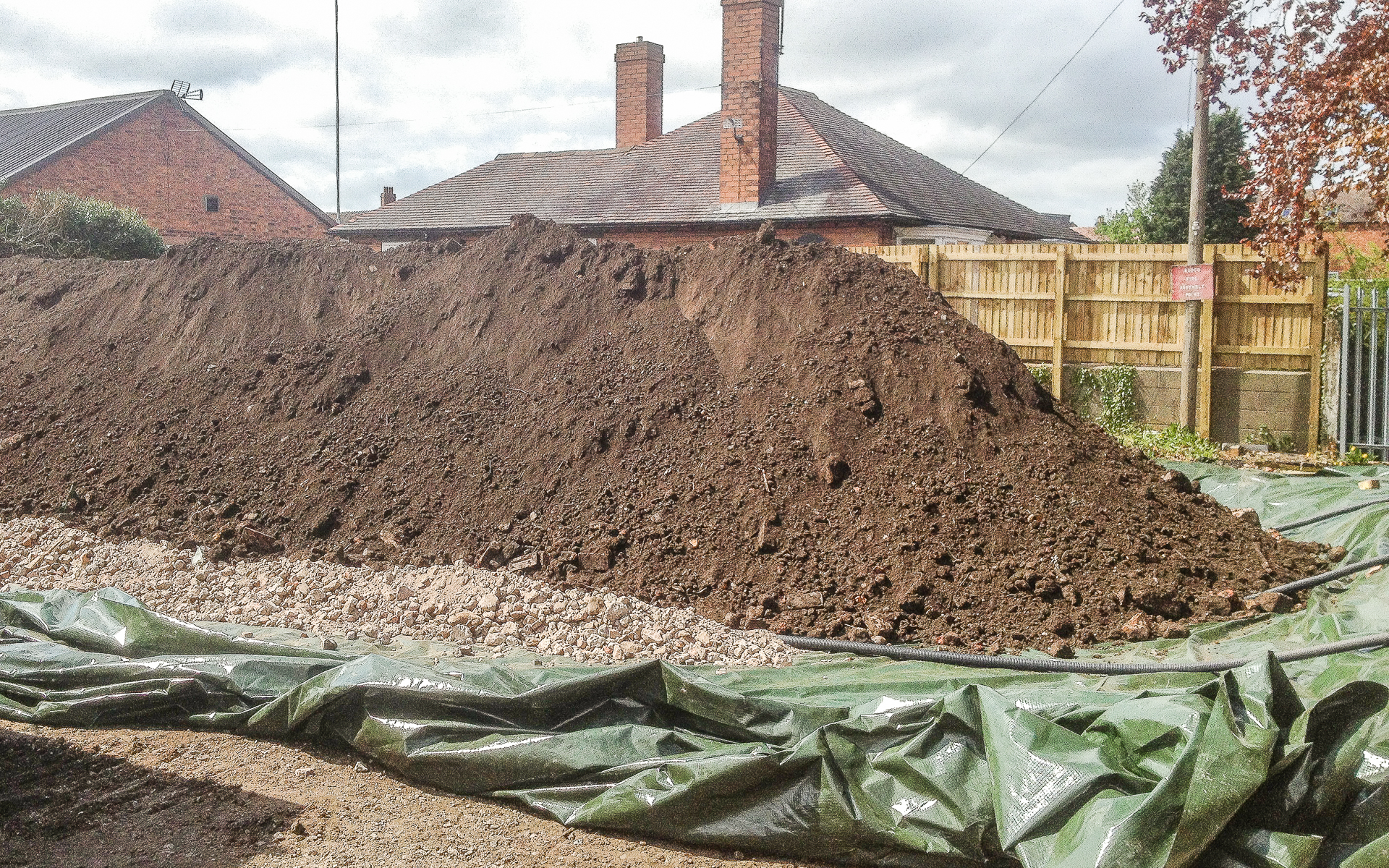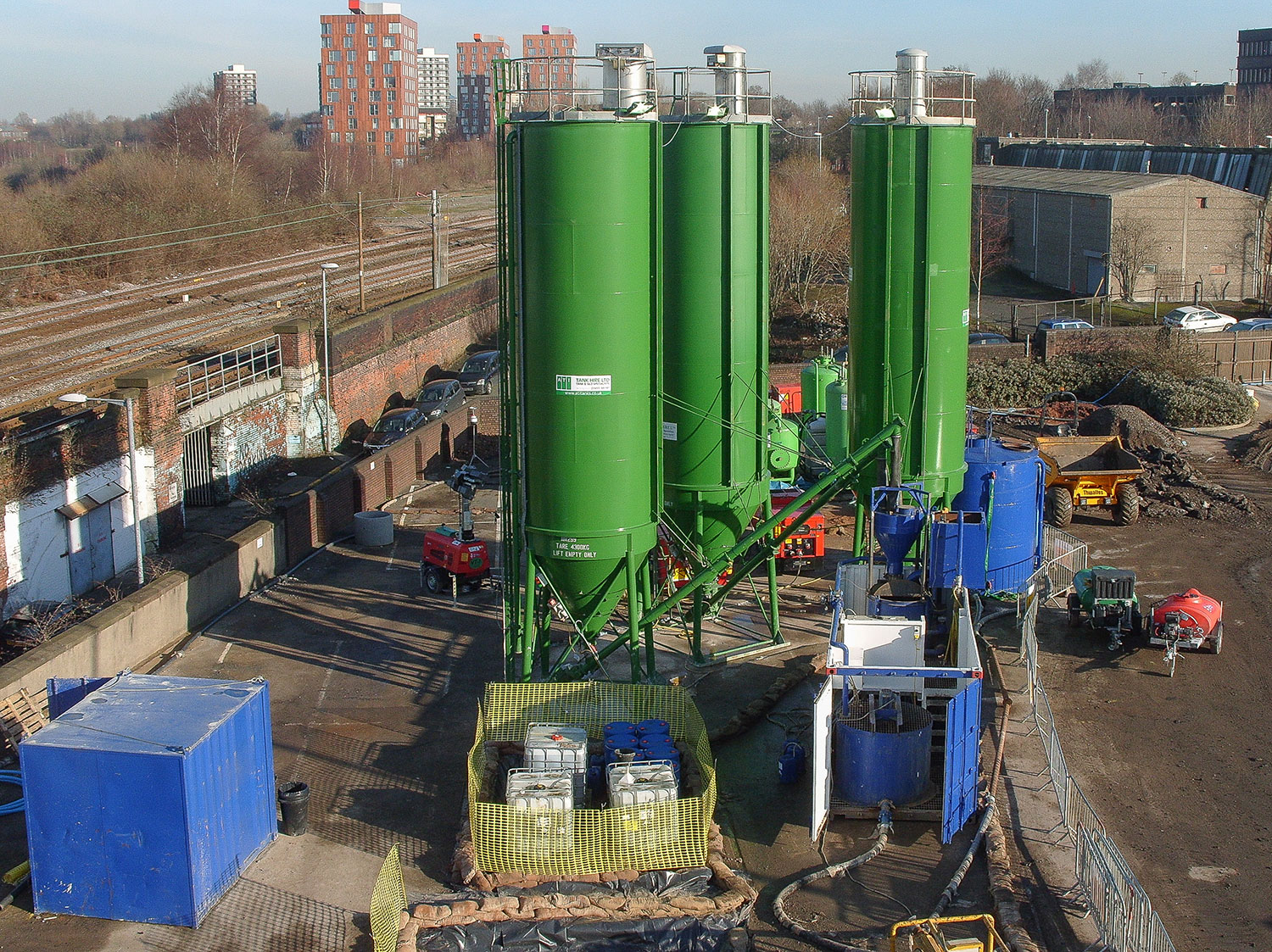The Gould Street site is owned by National Grid Properties and formerly operated as a gasworks. Dating from 1848, the site is located in a residential redevelopment in central Manchester and covers an area of 2.67 hectares.
Historical records indicated that as part of the gasworks decommissioning, some of the former gas holder bases were backfilled with spent oxide materials. The backfill was impacted with typical gasworks contaminants including hydrocarbons, metals, cyanide and ammonium. These elevated contaminant levels triggered the formation of the remediation objective to reduce contaminant leachate to risk assessment derived acceptable concentrations.
The agreed remediation programme designed and executed by Ash Remediation Management entailed in-situ and ex-situ stabilisation/solidification of the spent oxide material.
In-situ Stabilisation
From the outset it was evident that significant odour issues were associated with the largest gasholder and the significance of this was amplified by the site’s close proximity to commercial and residential receptors. Ash Remediation Management’s solution to this was to apply the stabilisation process using an in-situ technique. This system negated the requirement to physically excavate the odorous material thereby minimising this potential nuisance.
The in-situ treatment operation utilised the soil mixing capabilities of a piling rig. The piling rig auger rotates and bores down whilst injecting the treatment slurry (derived from feasibility trials) via ports located within the modified drilling head. Once the desired drilling depth is achieved the auger is withdrawn with the direction of rotation remaining the same to further facilitate homogenisation of the column. This description summarises the installation of a single column and the principle of the in-situ treatment method is based on a series of overlapping columns.
An auditable level of quality control was achieved through the use of a flow meter which measured the volume of treatment slurry injected. All other drilling parameters were measured and recorded via the rig’s on board instrumentation which generated daily production data that was used in the quality control regime.
The in-situ treatment process was validated through a series of window sample holes spread across a theoretical grid system. Samples were taken from various depths and submitted for either chemical or geotechnical laboratory testing. An important additional benefit of the stabilisation process is a reduction in material permeability which physically resists contaminant leaching. In the case of the Gould Street site, permeability testing demonstrated values of less than 10-9m/s.
Ex-situ Stabilisation
Spent oxide from a further two gasholders also required treatment and, with odour not being problematic an ex-situ approach was deemed most suitable and cost effective. The process involved excavating and screening material prior to delivery to a bunded treatment area. In the treatment zone a tractor mounted spader dosed and mixed the stabilisation additives and spent oxide. The advantages of the spader unit include the ability to dose additives at specific rates ( kg/m2), to ensure full homogenisation of material and to achieve high treatment rates (up to 500m3/day).
The ex-situ treatment process was validated through conventional composite sampling. Samples were acquired at a predetermined frequency prior to laboratory submission. Treated spent oxide was reinstated within the original gasholder structures thus eliminating any requirement to import fill material.
The Gould Street project was completed on time, on budget and with a 100% safety record.
Awards
The forward thinking and sustainable approach adopted by Ash Remediation Management proved to be instrumental in the Gould Street site being awarded the Civil Engineering Contractors Association Innovation prize.
The in-situ work was also nominated for the 2011 Brownfield Briefing ‘Best In-situ Treatment’ award. The Gould Street site was awarded a creditable second place and was highly commended by the judges.



